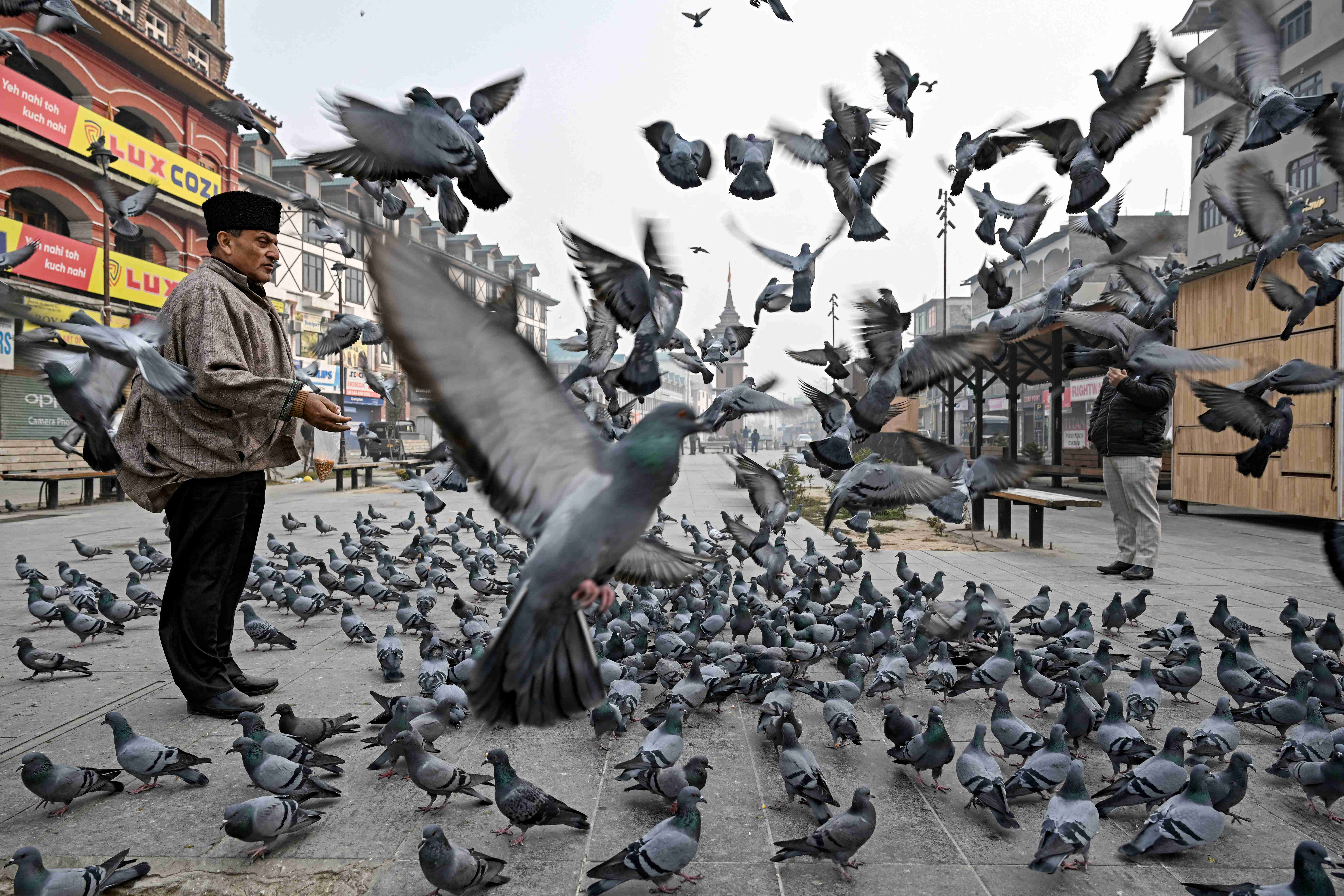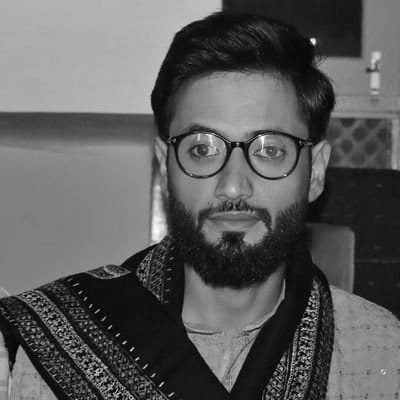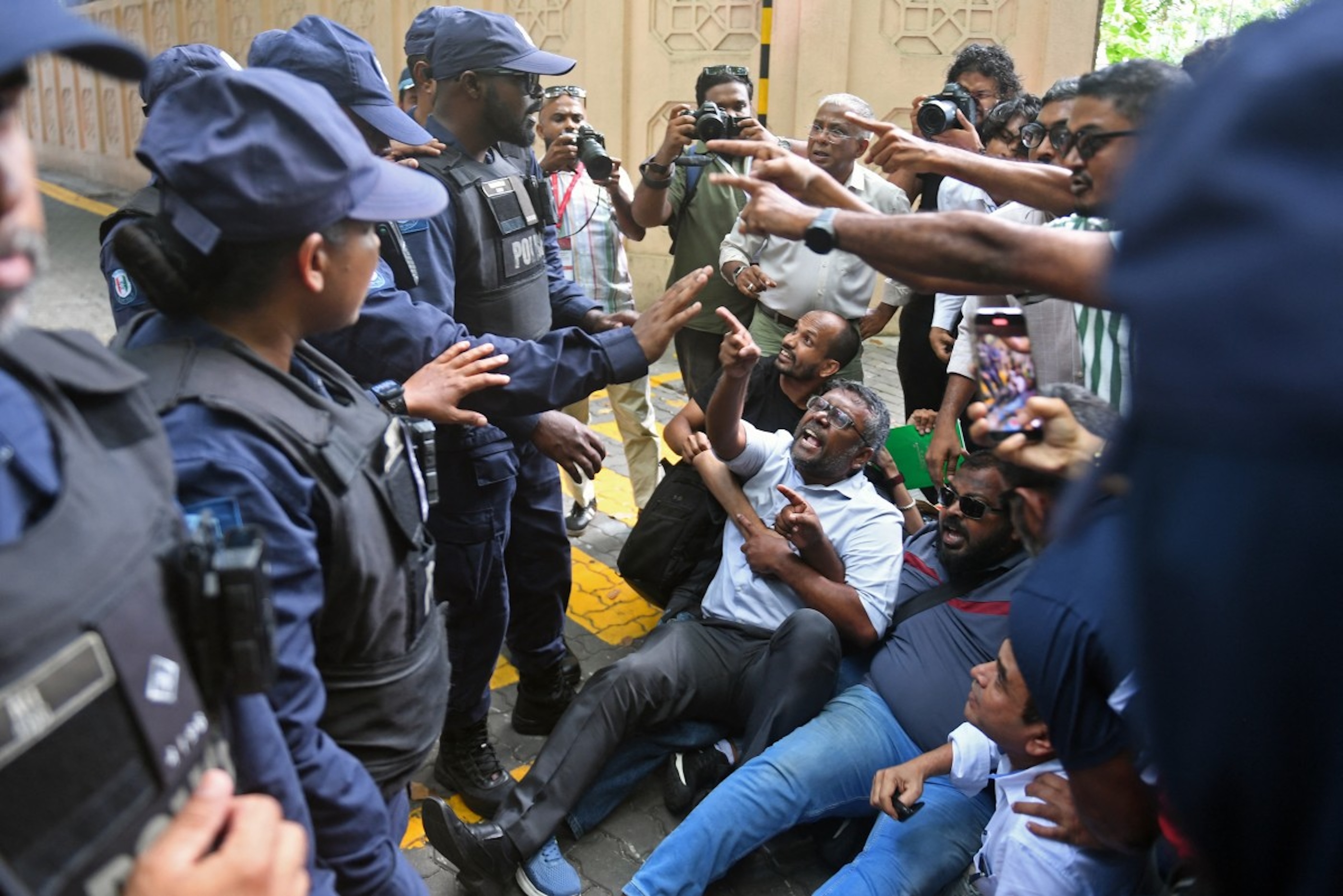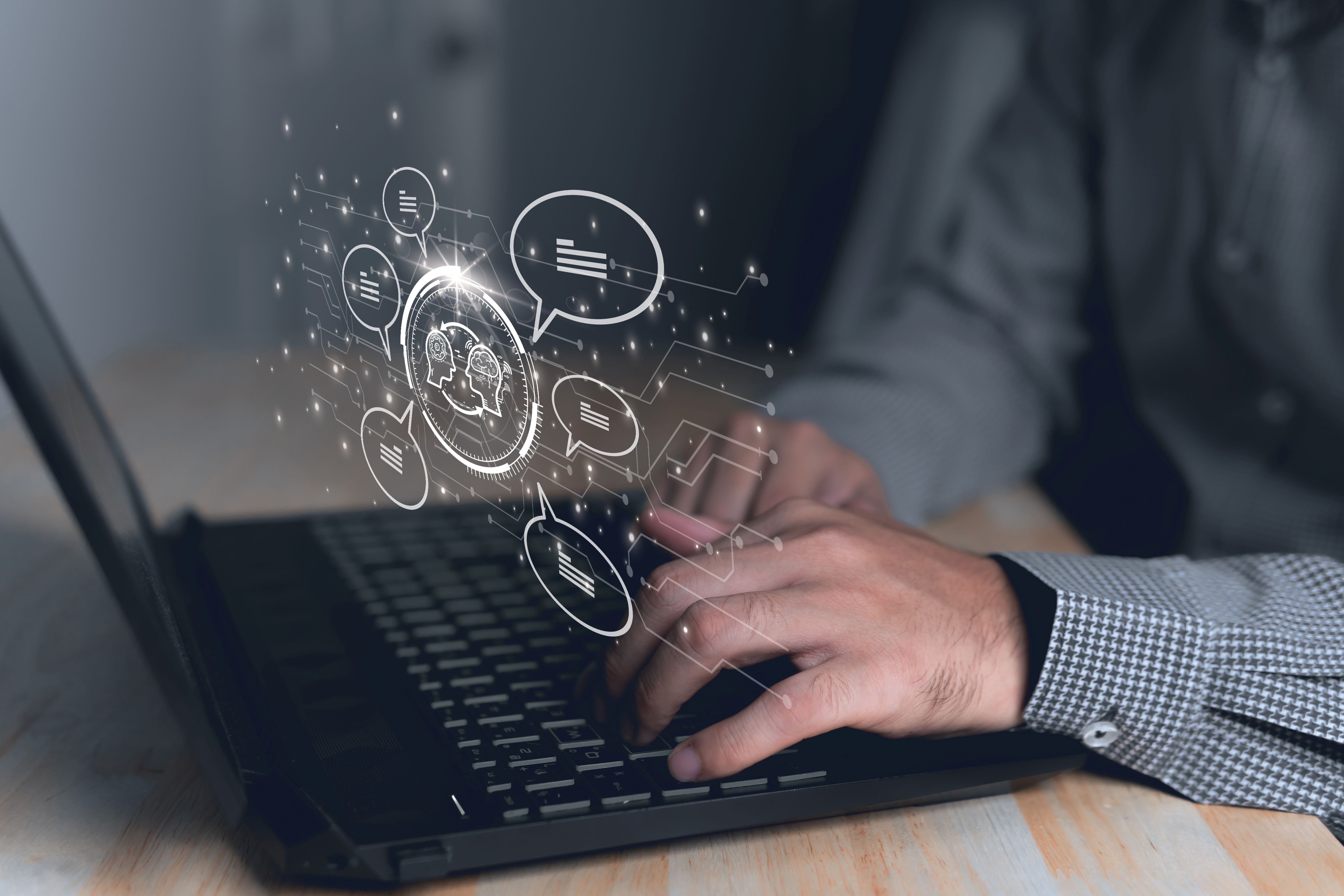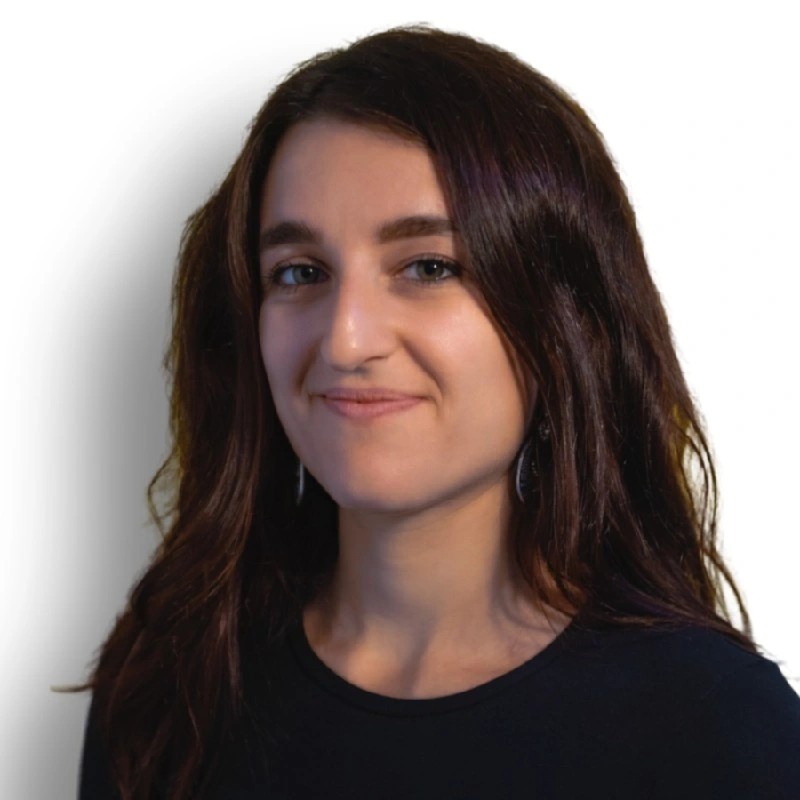في قطار الأنفاق بعد ظهيرة يوم مزدحم، عامل يسند رأسه إلى عمود الوقوف، عيناه مغلقتان على تعب.. في آخر الرصيف، أب يلاعب ابنه بملاكمة وهمية.. على الركن كشك صحف صغير يحسب صاحبه رزق يومه بتعداد المارّة، وهناك أمّ تسحب أطفالها الثلاثة بعصبية إلى خارج محل للحلويات، وشاب تشي الدهشة في عينيه أنّه جديد في هذا المكان.. صور يوم عادي لأناس عاديين، يمكن أن تجد المئات منها في شارع واحد فقط كل يوم!
من هنا كانت "قصة" منصّة لسرد المغيّب عن الصحافة.. نلتقي بأناس من حول العالم.. نلمس في وجوههم "العادية" قصصا تستحق التوثيق.. نلخص تجربة كل منهم بصورة فوتوغرافية واحدة مرفقة بنصّ يسرد بإيجاز مشاعرهم وتجاربهم.
منصّة "قصة" موضوعها الإنسان والأماكن المتوارية عن أضواء الصحافة، أبطالها ليسوا خبراء أو أصحاب قضايا كبيرة، لكنّ قصصهم انعكاس غير مباشر للأحداث الكبرى. الوطن، والحب، والخوف، والقلق الشخصي، والفرح العارم.. كلها تضيع في زخم الخبر العاجل، فأرخناها بصورة ونصّ لتصبح "قصة".
في زمن الفيديو والمحتوى الرقمي السريع، هل يمكن للقصة الفوتوغرافية أن تنافس؟ أن تسرد قصة؟ عامان من الاختبار.. لكنها واعدة.
مغامرة السرديات الجديدة
كم مرة حضرت فيها حفلة موسيقية أو فعالية اجتماعية، ووجدت الناس يهتمون بتصويرها أكثر من عيش التجربة نفسها؟ ثمة هوس حقيقي لدى الإنسان بأن يشارك قصته، وثمة دائما "متابعون" ينتظرون بلهفة للاطلاع على هذه التجارب والتفاعل معها.
في كتابها "الحياة الرقمية على إنستغرام.. التواصل الاجتماعي الجديد للصور"، تشرح الباحثة في جامعة "شيفيلد" إليسا سيرافينيلي الطرق التي غيرت بها منصة إنستغرام الأساليب الاجتماعية عبر التجارب المرئية.
ومع بروز المنصات الخاصة بنشر الصور -منصة إنستغرام بشكل رئيسي- أصبح الناس يميلون إلى توثيق تجاربهم والاهتمام بنقلها إلى الناس بشكل أكبر من السابق، وفي الوقت ذاته، تولّد لديهم اهتمام أقرب إلى الهوس، بمعرفة التجارب التي عاشها الآخرون ونشروها عبر صفحاتهم الشخصية.
من هنا، كان لا بد من استغلال هذا الاهتمام المتزايد لدى الجمهور، وتحويله إلى قصص قدّرنا أنها أكثر أهمية من صورة قطة صديقك، أو صورة فنجان قهوة على إحدى الشرفات المطلة على البحر، وهي قصص الناس وتجاربهم الشخصية الإنسانية، فأخذنا الجمهور معنا في رحلة شيقة، يجوبون فيها شوارع العالم ويتعرفون على حياة الناس: طقوسهم، وفرحهم، ومعاناتهم، وتجاربهم الشخصية الفريدة.
وبينما تصارع الصحافة للانتقال إلى "العالم الجديد"، حاملة معداتها الثقيلة وخبرها اليومي المباشر إلى منصات "يتنزه" فيها الناس بخفة بين صور القطط والنكت اليومية، صار أمامها اليوم خياران لا ثالث لهما: إما الخضوع لإغراء "المليون نقرة" وما فوق، أو قرار فرض مكانة جديدة لها وسط هذه الحداثة، وهو ليس خيارا سهلا لأنه يؤسس لمغامرة ابتكار سرديات جديدة واختبارها.
منصة "قصّة" انعكاس للخيار الأخير، خيار الصحافة الرصينة التي تبحث عن موطئ قدم في منصات صممت للترفيه قبل الإعلام.

من الناس إلى الناس
منصّة "قصة" تهرب -حرفيا- من الآني والعاجل والسياسي.. حدود القصص فيها لا تحصرها الجغرافيا أو الزمن، إذ يمكن للمتصفح أن يطلع على قصص المنصّة اليوم، ويمكنه أن يعود إليها بعد عقدين أو أكثر، وسيجد قيمتها ثابتة كما هي. والسر كله يكمن في اختيار الزاوية.. الإنسان.
القصص التي تحركها التناقضات النفسية الذاتية، أو التجارب الشخصية، ليس بالضرورة أن يكون المشاهد قد عايشها، لكن قيمتها تكمن في القدرة على الارتباط معها عاطفيا.
عرفنا منذ البداية أن على الصحفي أن يتقمص أدوارا جديدة في هذه التجربة. مراسل منصة "قصة" لا يبحث عن القصص في الصحف أو المجلات أو بإجراء اتصالات "خاصة"، أي المصادر التقليدية للبحث الصحفي.. بل على العكس تماما، فالقصة هي التي تجد طريقها إلى الصحفي.. تصله وهو يتجول في سفر ما، أو يمشي في زقاق حيّه عائدا من المخبزة. بمعنى آخر، قصص "قصة" وجدت طريقها إلى المنصّة لأن جاذبية أبطالها فرضوا أنفسهم، سواءً بوجوههم أو لباسهم الفريد المعبّر، أو بالتجارب التي تميزهم وتبدو جلية على محياهم. لذا نردد في غرفة التحرير دائما: منصّة "قصة" من الناس إلى الناس.
ولأن الناس لا يملكون -غالبا- الخبرة التقنية أو الحدس الصحفي لنقل القصص التي تحيط بهم، لعبنا دور الوسيط.. كانت رغبتنا أن يشعر متابع منصة "قصة" أنه يزور صفحة شخص آخر، شخص جديد كل مرة، ليستمع لقصص جديدة، ليجلس على مقربة منه وينصت له أو يحاوره.
كلّ ذلك بصورة واحدة، ونصّ مقتضب لا يتجاوز 150 كلمة، أي ما نسبته عُشر حجم النصّ التقليدي في الصحف.

خلاصات غير نهائية
باستمرار، يشعر فريق عمل منصة "قصة" بمتعة خالصة في ممارسة هذا النوع من الإنتاج. لكن الجهد الذي لا مفر منه، هو مرحلة ما بعد الإنتاج: تقييم مستمر لأداء المنصّة، نتائج، ثم قواعد جديدة للعمل. هكذا يوميا، منذ سنتين وحتى اليوم.
ما هي خلاصتنا إذا؟
ما لم نعرفه في البداية حين كنا في طور إطلاق المنصة -وهذه قصة أخرى تستحق أن تروى- هي الشروط البصرية لنجاح الصورة على وسائل التواصل الاجتماعي. ما القيمة التقنية للصورة؟ كيف نحكي قصة في صورة واحدة؟ وماذا عن النص: هل نعتمد أحادية في الموضوع، أم نقدم ملخصا شاملا عن القصة التي نعالجها؟
أسئلة كثيرة كانت دائما تحت محك الاختبار والتجربة.. نصيب ونخطئ لكننا نتعلم.
عندما انطلقت "قصة" كانت النتائج مرضية.. تفاعل ورسائل من الناس فيها الكثير من الثناء.. مرّ الوقت، وبدأنا نلاحظ أن هناك تباينا في التفاعل بين القصة والأخرى.. حينها حللنا المحتوى وتفاعل الجمهور للإجابة على سؤال: ما هي معايير القصة الصحفية المصورة الناجحة على وسائل التواصل الاجتماعي؟
بصريا، يميل الناس إلى صور الإنسان الآخر.. حتى عندما تتناول قصة بلدة أو قرية، تحظى الصورة التي تتضمن عنصرا بشريا جاذبية أعلى.
نوع اللقطة (قريبة أو بعيدة أو متوسطة) لا تحدد مدى جاذبية الصورة، لكن اقتران الموضوع بنوع اللقطة مهم جدا. بمعنى آخر، حين تكون القصة خاصة وشخصية جدا، على الصورة أن تأخذ خطوات إضافية نحو الشخصية. وعندما يرتبط موضوع القصة بالحالة العامة للإنسان: ظروف حياته أو طبيعة عمله وعائلته، نأخذ خطوات إلى الخلف، ونضع الشخصية في إطارها الأوسع الذي يربط التفاصيل ويوضحها أكثر للقارئ، فالصورة لا تتحول إلى قصة إلا بشرط واحد: أن تحمل الموضوع في تفاصيلها.
قصة "مَغاور الأمازيغ" مثلا، لم تكن لتقدم نفسها دون السيدة، بطلة القصة، التي تقف بلباسها الأمازيغي التقليدي، تنظر إلى العدسة بقوة تعبّر عن المنعطفات القاسية لقريتها، كما وصفها النص المرفق.
أين تقف شخصية البطل في الصورة؟ تحدق في العدسة أم أنها ببساطة تمارس ما يفعله يوميا، مثل قصة "استخراج الذهب" أو قصة "صياد الضفادع".
الأمر مجددا يتوقف على الموضوع.. وضعية أبطالنا في الصورة تختلف باختلاف القصة. حين يحدثنا الشخص عن نفسه، نجده ينظر إلى العدسة كأنه يحاورنا بعينيه، وحين تدور قصته حول عمله، نتركه لروتينه، لنستخرج صورة تعبر عن صنعته.
القصة إذا هي المحدد الأول للصورة. أما حجم الصورة، ونوع الكاميرا، فهذه كلها معايير تتحرك في خلفية العمل.. القصة في القصة، ثم الآلة.
رحلة..
ما حاولنا فعله في "قصّة"، إضافة إلى تغيير نظرة الصحفيين للواقع، هو تغيير تجربتهم أيضا. سعينا لدفع الصحفيين إلى التوسل بمفهوم "الرحلة"، وتجربتها أثناء بحثهم عن القصص.. أن تمشي في شارع ربما زرته كثيرا، لكن هذه المرة عليك أن تعطي المجال لانطباعاتك كي تصل إلى الناس، فيشاركوك جزءا يسيرا من التجربة.. الروائح، والأصوات، وملمس الأشياء وحضورها؛ كلها تجارب لا يمكن للصورة أن تنقلها بقدر ما يمكنها أن تثير الفضول حولها، وهنا جاءت قيمة إضافة هذه التفاصيل إلى السرد، لكي تجعله أكثر حيوية وقادرا على إشراك القارئ في تلك "الرحلة".
كما أننا تجنبنا الإغراق في التفاصيل كي لا تتحول القصة إلى نص مغرق في الأدب، دون أي قيمة معرفية. ولذلك كان ضروريا إفراد جانب منها للمعلومات التي فضّلنا أن تأتي على لسان شخوص القصّة، أيّا كانت قيمتها بعيدا عن معايير الجدارة الإخبارية (Newsworthy) التي كانت السبب في إقصاء هذه القصص من الإعلام في المقام الأول.
فقصّة "مصلّح الأحذية الكوبي" الذي وجد في هذه المهنة ملاذا من مواعيد العمل المقيِّدة ووسيلة جيدة للتواصل مع الناس بشكل دائم، تمنح الجمهور مقاربة جديدة عن المهنة، بعيدا عن الصور النمطية التي ارتبطت بها، وحياة البؤس التي تخيلها البعض لمن يمتهنونها.
وفي الوقت ذاته، لم نسعَ لتجميل البؤس، فهناك مهن وظروف قاسية يمر بها كثيرون حول العالم، وصياغتنا للقصص في قالب تجميلي تجعلنا نشارك في قمع صوتهم وإضفاء لمسة "تجميلية" متعسفة على المعاناة التي يتجرعونها يوميا، فلا يمكن تجميل البؤس في قصة عمال المحاجر في جنوبي الأردن، وما يعانونه من انتهاكات لأبسط حقوقهم العمالية، لتصير الصورة ناقلة لمأساتهم وحجم الأذى الجسدي والنفسي الذي يتعرضون له، فكان سرد القصة على لسان أحدهم كفيلا بنقل جزء من واقعه.
كذلك، كان مهمّا أن نلقي نظرة على طبيعة القصص الإنسانية التي تنشر على منصات التواصل الاجتماعي، والتي وجدنا أن نسبة كبيرة منها تميل إلى صبغ القصص بطابع البؤس والمعاناة المستجدية لعواطف الجمهور، وتمنعهم من الشعور بالقصّة أكثر من مجرد شعورهم بالعجز.
الرحلة في المسير لا الوجهة
ما خلصنا إليه في هذه الرحلة الفريدة التي مررنا بها عبر أكثر من 70 دولة حول العالم، أن قصص الناس لا تنتهي من إبهارنا، ففي كل ركن من أركان هذا العالم، توجد آلاف القصص التي تستحق أن تروى، تحتاج فقط أن يتحرر الصحفيون من القوالب التقليدية التي تُبقي أصوات الناس في العتمة، وتبدأ في رحلة جديدة تمنحها حصتها العادلة؛ أن تمنحهم اسما لا رقما في الأخبار العاجلة.
وما زلنا نجوب الشوارع والمدن لأن الرحلة في المسير لا في الوجهة.


